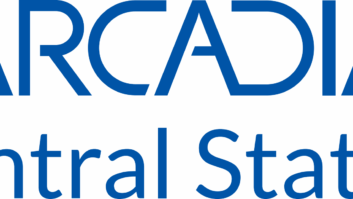Marketing Budget: the biggest bang for your buck
Nov 1, 1998 12:00 PM,
Alan Kruglak
Like many of you, I endured the same ritual every year. I hired anadvertising/marketing firm to develop a marketing campaign to lureprospects who would eventually translate into new business. After spendingtens of thousands of dollars, I would give up in frustration, bite my lipand perform the same ritual the following year with a different marketingfirm. The results were always the same-minimal.
There are many reasons why marketing campaigns are less successful thananticipated. The first is confusion. It is common to confuse marketing withadvertising, which can be compounded when you talk with some so-calledmarketing experts. If you believe in the invisible hand of Adam Smith, thenbe careful—that hand may be reaching for your pocket. This especiallyapplies to marketing.
According to marketing gurus, the best way to project your message is byadvertising in specific trade magazines and journals. Unfortunately,advertising does not work when selling high-ticket systems, a painfullesson I learned myself. In most cases, the money spent on advertising farexceeded the revenue generated by prospects. As a result, I created asimple rule on marketing: “Invest in any marketing program that generatesmore profit than it costs to execute.” Once I employed this concept,developing a marketing plan simply became a process of trial and error. Ifa marketing technique was successful, I kept it. If a technique failed, itwas history.
Although there are dozens of ways to market products and services, only aselect few work when selling systems. At my company, the two marketingtechniques that provided the biggest returns on investments were golftournaments and quarterly newsletters.
Golf tournaments and seminarsThe marketing technique that produced the biggest return on investmentinvolved hosting our own company golf tournament. In 1992, when our newvice president of sales suggested the idea, I told him he was crazy. Comingfrom the software industry, he explained that golf was a great pastime, andmore business was done on the golf course than any other forum. He turnedout to be right.
Golf works as a business-building vehicle because it forces you to spendfour hours with your golf partners, whether clients or prospects. Most ofthe time, you are not actually playing-you are talking. Verbal discourserarely focuses on business issues; it usually involves getting to know oneanother. In the process of knocking little white balls into little holes,golf creates strong relationships, the most valuable part of the salesprocess.
At our first tournament in 1992, 60 clients and prospects attended. In1993, the number was up to 80. By 1994, we had 100, and 1995 brought morethan 120 attendees. The powerful turnouts at our events showed us that agolf tournament (scramble format), along with a light products seminar inthe morning, was a great way to build stronger relationships with clientsand introduce our company to key prospects. The results of our tournamentswere subtle yet extensive, and the cost was minimal. By asking our vendorsto sponsor different holes, we hosted the event for less than $4,500.
The best part of our tournament was the results. During the three years weheld these tournaments, our company netted an additional $1.5 million incontracts from new clients, a great return on investment.
Newsletters: mining the goldThe second most effective marketing technique was the company newsletter.Newsletters were important because they focused on our most importantassets-our existing client base and prospect list. Although it is anexcellent idea to have your sales representatives contact clients on acontinual basis, there are other ways to keep your company in the minds ofyour clients and prospects. A professionally produced quarterly newsletteris an inexpensive way to stay in touch and demonstrate the professionalismand progress of your company, thereby accomplishing two important goals:
* Providing a soft-sell environment to push new products (your primarymission): Rather than directly promoting a given product and its features,we highlighted how an existing client, usually a well-recognized name, usedthe product to meet its requirements. It was a roundabout way to get ourprospects and clients to make the connection that if a product was goodenough for AT&T or Citibank, then it might be useful to them as well.
* Keeping your name and face before the client: A newsletter provides abasic form of institutional advertising, so we used it accordingly. A basicrule of marketing is: The more they see you, the more they remember you. Afrequent newsletter is a cost-effective way to be sure you are notforgotten.
That year, our newsletter program increased sales to existing clients, butan even bigger bonus was the new business it generated from prospects.
Over the years, our company tried literally dozens of marketing strategies.Some were moderately successful, while others went by the wayside. But ofall the different programs we implemented, our golf tournaments andnewsletters produced superior results and were worth their weight in gold.Combined with a well-trained sales force, these techniques helped us becomeone of the most profitable firms in our industry.










